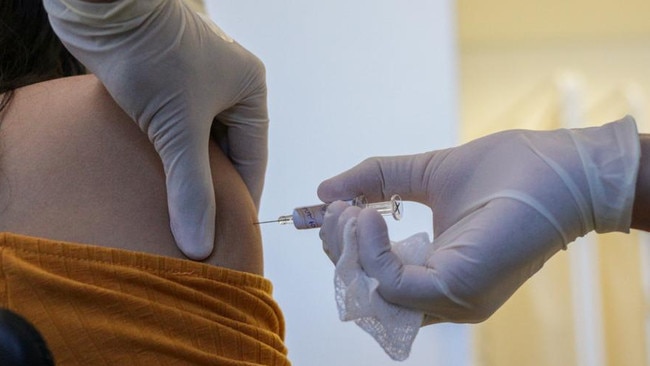Australia is not pulling its weight in seeking a vaccine for COVID-19

While there’s no doubt Australia’s world-class researchers are playing a crucial role in vaccine development, it’s important to ask if the federal government is doing enough to support them and ensure we can access a vaccine here when the time comes.
So far the government has invested in only one potential vaccine, at the University of Queensland.
Its $5m commitment to the UQ project is half that of the Queensland government and a fraction of what other countries are investing in their own candidates.
Britain has invested about 25 times as much in Oxford University’s potential vaccine. Germany has gone further, spending almost $500m to acquire a stake in German vaccine developer CureVac.
But the bigger problem is that all of Australia’s eggs are in one basket.
The UQ vaccine entered human trials this month and rightly is regarded as one of the most promising candidates in the world.
But it faces the same uphill battle as every other potential COVID-19 vaccine.
After all, we’ve never successfully immunised people against a coronavirus, despite sustained efforts on severe acute respiratory syndrome and Middle East respiratory syndrome.
That’s why there are more than 200 vaccine candidates in development worldwide, according to the London School of Hygiene and Tropical Medicine. Only a very small proportion of them will be viable. And it’s why other countries are hedging their bets and investing in a range of potential vaccines. The US — not otherwise a leader in the global COVID-19 response — has launched a $14bn effort to develop a vaccine by January. Operation Warp Speed includes initial investments in more than a dozen potential vaccines, including many outside the US.
This isn’t philanthropic. Early investments by the US and other countries will give them priority access if and when vaccines prove successful. Britain and the US, for example, will have first dibs on hundreds of millions of doses of the Oxford vaccine.
Investing in multiple projects also recognises that more than one vaccine will be required, given the challenges of manufacturing and distributing billions of doses worldwide.
So the government needs to engage and invest urgently in a range of potential COVID-19 vaccines.
It also needs to plan now for how we will manufacture and distribute enough doses for all Australians.
Australia is lucky to have CSL, one of the world’s leading vaccine developers. Depending on the type of vaccine that proves successful, CSL and its vaccines arm, Seqirus, may be able to manufacture the vaccine here or at least transform bulk material into individual doses.
But CSL and others will be constrained by global supply issues, including an ongoing shortage of glass vials.
Other countries are already investing heavily in overcoming such obstacles.
Vaccinating all Australians against the same disease at the same time also will be an immense challenge. The supply issues that marred this year’s flu vaccine effort are a cautionary tale.
So the government needs to plan carefully for national distribution, including the difficult question of who will be vaccinated first. One worthy option would be to prioritise the health workforce — protecting not only our frontline workers but also the capacity of our health system and ultimately all Australians.
Farther from home, Australia also needs to play its role in ensuring an equitable global distribution of COVID-19 vaccines.
While investments by advanced economies are needed to develop vaccines, they cannot be the only basis on which those vaccines are distributed.
So far, Australia has not pulled its weight in global efforts to ensure that low-income countries have access to eventual vaccines.
In May, the European Commission and its partners around the world pledged $12bn to the Coronavirus Global Response. The Australian government pledged just $15m to global efforts — 0.001 per cent of the total.
It also has yet to finalise a contribution to a separate effort led by Gavi, The Vaccine Alliance. That effort aims to produce two billion vaccine doses by next year to be distributed to low-income countries and at least one in five people in contributing countries.
There is an obvious moral imperative for these efforts. But COVID-19 doesn’t respect national borders, and Australia also has a strong interest in ensuring that low-income countries in the Pacific and Southeast Asia can access vaccines.
It’s past time for the government to engage and invest in vaccine development — at home, in our region and around the world.
Our lives and livelihoods depend on it.
Chris Bowen is federal opposition health spokesman.



If we needed a reminder that COVID-19 will be with us until we have a vaccine, it is coming in loud and clear from Melbourne and, increasingly, NSW.